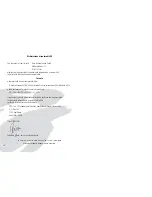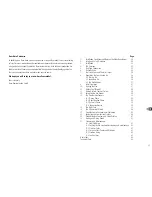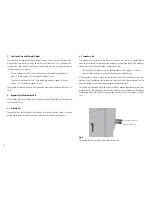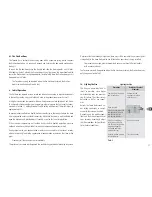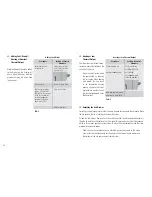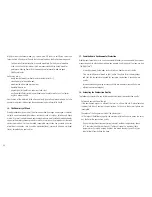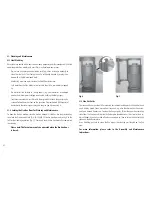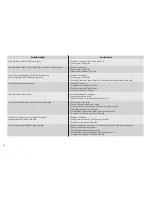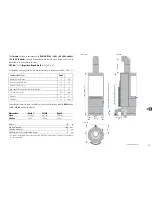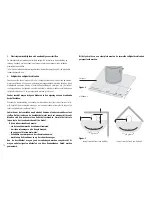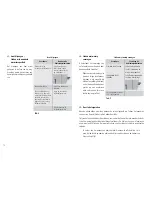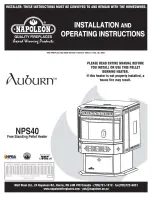
60
Highly resinous coniferous wood (e.g. spruce, pine, fi r) tends to emit fl ying sparks and
leaves behind a fi ne layer of fl ue ash that can swirl up when the fi re box door is opened.
For the most attractive stove fi re, use beech wood logs. If other types of wood are
used, such as oak, birch, pine or larch, we recommend adding beech wood for
picturesque dancing fl ames. Brushwood and small pieces of wood are good
kindling materials.
he burning of e.g.:
- damp or moist wood (residual moisture content over 20%),
- varnished or plastic-coated wood,
- wood treated with wood preservatives,
- household waste, or
- paper briquettes (pollutants: cadmium, lead, zinc)
- any fl ammable fl uids (including methanol and ethanol) as well as any fuel pastes
or gels is not permitted.
Combustion of the materials listed above not only gives off unpleasant odours, but also
generates emissions that damage the environment and are harmful to health.
16. The Chemistry of Wood
Wood predominantly consists of the elements carbon, hydrogen and oxygen. It contains
virtually no environmentally hazardous substances such as sulphur, chloride and heavy
metals. As a result, complete wood combustion produces mainly carbon dioxide and water
vapour as the primary gaseous products as well as a small quantity of wood ash as the solid
combustion residue. On the other hand, incomplete combustion can generate a number
of pollutant substances, such as carbon monoxide (toxic), acetic acid, phenols, methanol
(toxic), formaldehyde, soot and tar.
17. Contribution to Environmental Protection
Whether your Toronto burns in an environmentally-friendly or environmentally hazardous
manner depends to a large extent on how you operate it and the type of fuel you use (see
„The Right Fuel“).
Use only dry wood; hardwoods such as birch and beech are most suitable
Only use small pieces of wood to light the fi re. They burn faster than large logs
and thus the temperature required for complete combustion is reached more
quickly.
For continual heating, adding smaller quantities of wood more frequently is more
effi cient and more ecological.
18. Evaluating the Combustion Quality
The following characteristics can facilitate easy evaluation of the combustion quality:
- Colour and composition of the ash
If the combustion process is effi cient, the result is a fi ne white ash. Dark colouration
indicates that the ash contains charcoal residue; in this case, the burn-off phase was
incomplete.
- The colour of the fl ue gases emitted at the chimney pot
In this respect, the following applies: the more invisible the fl ue gases exiting the chim-
ney, the better the combustion quality.
During the transitional seasons (spring/autumn), outdoor temperatures above
16°C can impair the chimney draught. If a draught cannot be created at these
temperatures by rapidly burning paper or thin wood shavings (quick fi re), you
should refrain from lighting the stove.





